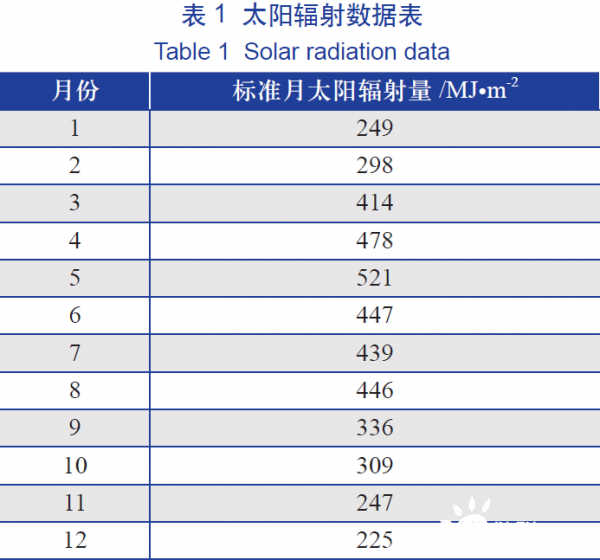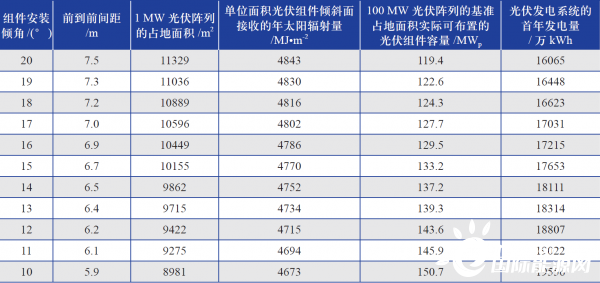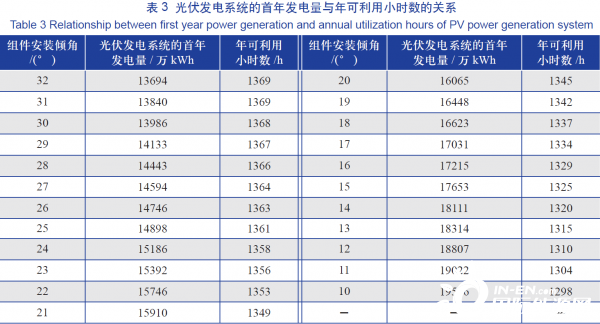Research On Reducing The Influence Of Optimal Installation Angle Of Solar Mounting System On Power Generation
Solar mounting structure is a system that converts solar energy into electrical energy. When designing a solar mounting structure, the following work needs to be done: First, compare and select photovoltaic modules, inverters, and photovoltaic support operation modes according to the mainstream technologies in the market. 、Comparison and selection of the scale and capacity of the photovoltaic sub-arrays, so as to obtain the performance parameters of the main equipment; then calculate the optimal installation inclination angle, azimuth angle, number of series and parallel, and the north-south direction of the adjacent front and rear modules of the photovoltaic array. The distance between the two; finally, the layout of the photovoltaic array is given. When the solar mounting structure's support operation mode selects the fixed solar panel support, the best installation inclination angle of the photovoltaic module is generally based on the boundary conditions such as the longitude and latitude of the solar mounting structure, solar radiation, meteorological data, and the shadow shelter time of the winter solstice. Calculated. However, due to the limited land area of photovoltaic power generation projects in some areas, it is impossible to arrange more photovoltaic module capacity according to the normal design spacing. Therefore, in order to increase the module capacity of photovoltaic power generation projects and increase the power generation capacity of solar mounting structures, this paper studies when photovoltaic power generation projects are used. When the modules use solar mounting system, while keeping the total area of the project unchanged, the AC grid-connected power is not required, and the internal rate of return of the project investment is met, the DC capacity of the photovoltaic array is increased by reducing the optimal installation inclination of the photovoltaic modules. Ways to increase the power generation capacity of solar mounting structures.
1 Calculate the best installation inclination angle of the
solar mounting strutrue
This paper takes a solar mounting structure as a calculation example for analysis. The geographic coordinates of the solar mounting structure are 37°08'N, 140°09'E, and the altitude is 540 m. The solar radiation data of this place is shown in Table 1.

According to the data in Table 1, the Retscreen software can calculate the installation inclination angle corresponding to the maximum annual solar radiation received by the photovoltaic module. When calculating, the installation inclination angle is recommended to start at 5° until the installation inclination angle of the maximum radiation value appears , And then on the basis of this value, select a few larger angles for review, and finally get the installation inclination angle corresponding to the maximum radiation of the inclined surface is the optimal installation inclination angle of the photovoltaic modules in this
solar mounting structure. When using a solar mounting system , the relationship between the different installation inclination angles of the modules and the average daily solar radiation received by the inclined surface is shown in Figure 1.

It can be seen from Figure 1 that when a fixed
solar bracket is used, the average daily solar radiation received by the inclined surface of the photovoltaic module is the largest when the installation inclination angle of the photovoltaic module is 32°[1], then the annual solar radiation received by the inclined surface of the photovoltaic module at this angle The amount is also the largest. Therefore, the optimal installation inclination angle of the components in the solar mounting structure is 32°.
2 Experiments to reduce the optimal installation inclination of photovoltaic modules
The experimental calculation is based on the footprint of the 1 MW photovoltaic array and the optimal installation inclination angle of 32°. In the experiment, the installation inclination angle of the components ranges from 10° to 32°, and the installation inclination angles of the components are reduced in order at 1° intervals for testing. When the shadow blocking time of the front and rear components is the same, the front row of the solar mounting system components The distance between the front edge of the rear solar mounting system assembly (hereinafter referred to as the "front-to-front distance") is also reduced accordingly, and the footprint of the 1 MW photovoltaic array will also be different at this time. Table 2 shows the relationship between the module installation inclination, the front-to-front spacing, the area of the photovoltaic array and the power generation of the solar mounting structure in the first year.


Analysis of the data in Table 2 shows that when the total floor area remains unchanged, the optimal installation inclination angle of the module is reduced. Although the annual solar radiation received by the inclined surface of the module is gradually reduced, it can actually be arranged under the same floor area. The capacity of photovoltaic modules has increased, that is, the DC installed capacity of photovoltaic arrays has increased by 1% to 50%, and the first-year power generation of solar mounting structures has increased by about 10% to 40%.
Since the annual available hours can more intuitively and clearly reflect the power generation situation of the solar mounting structure than the power generation, the annual available hours are generally used to describe the annual power generation level of the solar mounting structure; and in economic calculations, then Dynamic economic indicators such as project investment income and internal rate of return are calculated based on the annual power generation.

The formula (1) can be used to convert the first year's power generation of the solar mounting structure into the number of annual available hours. The specific data after conversion is shown in Table 3.

It can be seen from Table 3 that when the installation inclination angle of the
solar mounting bracket is 10°, the first-year power generation of the solar mounting structure is the highest, which is 195.56 million kWh; and when the installation inclination angle of the modules is 32°, the optimal installation inclination angle , The annual available hours of solar mounting structure is the highest, 1369h.
Therefore, under the premise that the AC grid-connected power is not required and the economic calculation meets the project investment internal rate of return, in order to increase the annual power generation of the solar mounting structure, the optimal installation inclination angle of the components can be appropriately reduced.
It should be noted that the degree of reduction in the installation inclination of the solar bracket s needs to be determined after technical and economic comparisons according to the project’s installed capacity requirements and the increase in power generation; it is also necessary to comprehensively consider the dust pollution situation in the project location and the solar mounting structure. Factors such as the cleaning frequency of photovoltaic modules.
3 Conclusion
This paper studies that the optimal installation inclination of the
solar mounting system can be appropriately reduced under the condition of keeping the total area unchanged, no requirement for AC grid-connected power, and meeting the project investment internal rate of return, thereby increasing the annual power generation of the solar mounting structure. . The research conclusions show that although the optimal installation inclination of the modules decreases, the annual solar radiation received by the inclined surface of the modules also decreases, but under the same floor area, the DC installed capacity of the photovoltaic array will increase, thereby making the photovoltaic The annual power generation capacity of the power generation system has been increased.

Above news from CHIKO Sales & Marketing department
Add: No 680 Xingwen Rd. Jiading dist. Shanghai 201801 China Email: Chiko@Chikolar.com
Website: http://www.chikolar.com Fax : +86 (21)59972938
Phone: +86(21) 59972267 59973712 59973713--811






